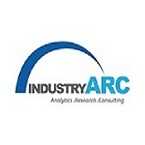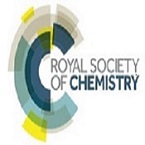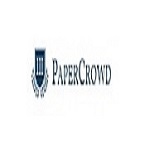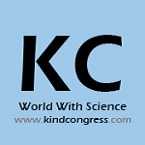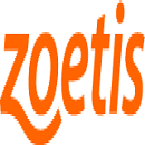Session and Tracks
Track 1 : The Evolution of Cell and Gene Therapy
The Evolution of Cell and Gene Therapy explores the remarkable journey of these fields from their inception to their current status as transformative forces in medicine. This session delves into the historical milestones, pioneering research, and ground-breaking discoveries that have shaped the development of cell and gene therapies. Beginning with the early experiments that laid the foundation for these fields, the session traces the key advancements that have propelled cell and gene therapy forward. From the first successful gene therapy trials to the development of CRISPR-Cas9 technology, attendees will gain insight into the pivotal moments that have defined the evolution of these therapies. Speakers will discuss the challenges and hurdles that researchers and clinicians have overcome, highlighting the perseverance and dedication that have driven progress. The session will also explore the regulatory and ethical considerations that have shaped the landscape of cell and gene therapy, emphasizing the importance of responsible innovation. Looking to the future, this session will examine emerging trends and technologies that hold promise for the next chapter of cell and gene therapy. From personalized medicine to novel therapeutic targets, attendees will gain a glimpse into the exciting possibilities that lie ahead.The earliest conceptual history of gene therapy began with the recognition of DNA as the transforming substance capable of changing the phenotypic character of a bacterium and then as the carrier of the genomic code. Early studies of oncogenic viruses that could insert into the mammalian genome led to the concept that these same viruses might be engineered to carry new genetic material into mammalian cells, including human hematopoietic stem cells (HSC). In addition to properly engineered vectors capable of efficient safe transduction of HSC, successful gene therapy required development of efficient materials, methods, and equipment to procure, purify, and culture HSC.
Track 2 : Recent Advances in Stem Cell Research
Stem cell therapy has continued to advance, bringing hope to cure diseases that were once considered incurable. The concepts underlying the use of stem cells in therapy depend on their inherent capacity for regenerating the original tissues of the body. Additionally, stem cells can be altered to provide powerful drugs or nanomaterial’s and has an ability to modulate the immune system. Moreover, innovative advances continue in immunotherapy with allogeneic cells and their progress toward clinical use. The T cell immunology field has focused on cytotoxic T lymphocytes, which play an essential role in the immune defence against viral infections and malignancies. The most widely adopted stem cell therapy is the transplantation of hematopoietic stem cells to treat haematological malignancies and disorders of the immune system and blood. Other ongoing clinical trials involving stem cell therapies have already generated impressive results, such as when patient-derived induced pluripotent stem cells (iPSCs) were induced to differentiate into pigment epithelial cells of the retina when transplanted into patients with macular degeneration, greatly improving the patient's sight.derived induced pluripotent stem cells (iPSCs) were induced to differentiate into pigment epithelial cells of the retina when transplanted into patients with macular degeneration, greatly improving the patient's sight. Furthermore, in a recent world-first, iPSC-derived mesenchymal stromal cells have successfully been used to treat patients with acute steroid-resistant graft vs. host disease .One of the newest and most promising immunotherapy-based treatments against solid tumors and hematological malignancies are chimeric antigen receptor (CAR)-based therapies.
Track 3 : Gene Editing Technologies: CRISPR and Beyond
Originating from the bacterium Streptococcus pyogenes, Cas9 was the first Cas protein that scientists repurposed for gene editing.CRISPR-Cas9 technology uses a single guide RNA (sgRNA) to target and cleave DNA. Researchers engineer target-specific sgRNAs by combining two RNA molecules from the bacterial CRISPR system: a sequence that recognizes a specific location in the DNA (crRNA) and a sequence that acts as a binding scaffold for Cas9 (tracrRNA) The modifiable sgRNA sequence allows scientists to program a CRISPR-Cas9 system to target any DNA sequence of interest if it is near a Cas-specific DNA sequence called a protospacer-adjacent motif (PAM) The PAM initiates Cas9-DNA binding, the sgRNA invades the double helix and hybridizes with the target DNA, and Cas9 breaks the unwound double-stranded target DNA immediately in front of the PAM. Repair mechanisms, namely homology-directed repair (HDR) and no homologous end joining (NHEJ), repair the break, which can alter the target gene’s biological function.For instance, researchers can use the different repair mechanisms to their advantage to intentionally insert a desired sequence change via template-dependent HDR or introduce random changes through template-independent NHEJ. Cas12a offers multiple advantages over Cas9 (Table 1).8 It produces staggered rather than blunt DNA breaks,9 which favor HDR mechanisms instead of both NHEJ and HDR.5 Additionally, Cas12a does not need a tracrRNA, and possesses RNase activity that can process a single pre-crRNA array containing several guide RNAs for easier multigene editing than Cas9.10 Cas12a also has reduced off-target effects compared to Cas9,11 and is uniquely capable of PAM-independent single-stranded DNA degradation, which is useful for diagnostic applications
Track 4 : Regenerative Medicine and Tissue Engineering
Regenerative medicine is a broad field that includes tissue engineering but also incorporates research on self-healing – where the body uses its own systems, sometimes with help foreign biological material to recreate cells and rebuild tissues and organs. The terms “tissue engineering” and “regenerative medicine” have become largely interchangeable, as the field hopes to focus on cures instead of treatments for complex, often chronic, diseases. This field continues to evolve. In addition to medical applications, non-therapeutic applications include using tissues as biosensors to detect biological or chemical threat agents, and tissue chips that can be used to test the toxicity of an experimental medication. Tissue engineering evolved from the field of biomaterials development and refers to the practice of combining scaffolds, cells, and biologically active molecules into functional tissues. The goal of tissue engineering is to assemble functional constructs that restore, maintain, or improve damaged tissues or whole organs. Artificial skin and cartilage are examples of engineered tissues that have been approved by the FDA; however, currently they have limited use in human patients.Cells are the building blocks of tissue, and tissues are the basic unit of function in the body. Generally, groups of cells make and secrete their own support structures, called extra-cellular matrix. This matrix, or scaffold, does more than just support the cells; it also acts as a relay station for various signaling molecules. Thus, cells receive messages from many sources that become available from the local environment. Each signal can start a chain of responses that determine what happens to the cell. By understanding how individual cells respond to signals, interact with their environment, and organize into tissues and organisms, researchers have been able to manipulate these processes to mend damaged tissues or even create new ones.
Track 5 : Immunotherapy in Cancer Treatment
This session focuses on the latest advancements in immunotherapy for cancer treatment, including novel approaches, clinical trials, Immunotherapy has emerged as a ground-breaking approach in cancer treatment, offering new hope to patients by leveraging the power of the immune system to combat cancer. Unlike traditional treatments that directly target cancer cells, immunotherapy enhances the body's natural defences to identify and destroy cancer cells more effectively. One of the key strategies in immunotherapy is checkpoint inhibitors, which block inhibitory pathways in the immune system that cancer cells exploit to evade detection. By releasing these brakes, checkpoint inhibitors unleash the immune system to mount a more robust attack against cancer.Another promising approach is adoptive cell therapy, such as CAR-T cell therapy, which involves genetically modifying a patient's T cells to recognize and kill cancer cells. This personalized therapy has shown remarkable success, particularly in certain types of blood cancers.Immunotherapy has revolutionized the treatment landscape, leading to durable responses in patients with advanced and previously untreatable cancers. However, challenges remain, including identifying biomarkers to predict response and managing potential immune-related side effects. Chimeric antigen receptor (CAR) T-cell therapy works by turning your T lymphocytes, or T-cells, into more efficient cancer-fighting machines. Your T-cells are white blood cells in your immune system. Your immune system monitors your body for intruders, such as cancerous cells, by tracking proteins called antigens that are located on the surface of intruder cells. Your immune system relies on T-cells to track and kill intruders.
Track 6 : Cell-Based Therapies for Neurological Disorders
Cell-based therapies have emerged as a promising approach for treating neurological disorders, offering the potential to repair damaged tissues, restore lost function, and improve quality of life for patients. These therapies involve the transplantation or manipulation of cells to replace or support damaged neurons or neural tissue. Stem cells, including embryonic stem cells and induced pluripotent stem cells (iPSCs), have the ability to differentiate into various cell types, including neurons and glial cells. These cells can be used to replace damaged or lost cells in the central nervous system (CNS). Neural stem cells (NSCs) are a type of stem cell found in the CNS that can differentiate into neurons, astrocytes, and oligodendrocytes. Transplantation of NSCs has shown promise in conditions such as Parkinson's disease, spinal cord injury, and stroke. Mesenchymal stem cells (MSCs) are multipotent cells found in various tissues, including bone marrow and umbilical cord tissue. MSCs have immunomodulatory and anti-inflammatory properties, making them a potential treatment for neuroinflammatory disorders such as multiple sclerosis.
Track 7 : Ethical Considerations in Genome Editing
Ethical considerations in genome editing are paramount due to the profound implications of altering the genetic code of living organisms. Genome editing technologies, such as CRISPR-Cas9, offer tremendous potential for treating genetic disorders, enhancing agricultural productivity, and addressing environmental challenges. However, they also raise ethical questions and concerns that must be carefully considered and addressed. One of the primary ethical considerations is the potential for off-target effects, where unintended changes to the genome could occur, leading to unforeseen consequences. Researchers and clinicians must take precautions to minimize these risks through rigorous testing and validation of genome editing techniques. Another key ethical consideration is the use of genome editing in human embryos or germ line cells, which could result in heritable genetic changes. This raises concerns about the long-term implications for future generations and the potential for unintended consequences. Many countries have regulations in place that prohibit or restrict the use of genome editing in human embryos for reproductive purposes. There are also ethical questions surrounding the use of genome editing in non-human organisms, such as animals and plants. This includes concerns about animal welfare, ecological impacts, and the potential for unintended consequences on ecosystems.
Track 8 : Clinical Trials in Cell and Gene Therapy
Clinical trials in cell and gene therapy are critical for advancing these innovative treatments from the laboratory to the clinic. These trials are designed to evaluate the safety, efficacy, and potential benefits of cell and gene therapies in patients with various diseases and conditions. Clinical trials in cell and gene therapy are carefully designed to ensure patient safety and to provide meaningful data. They typically follow a phased approach, starting with phase 1 trial to assess safety, followed by phase 2 trials to evaluate efficacy, and finally phase 3 trials to confirm effectiveness and monitor long-term safety. Patients participating in cell and gene therapy trials are selected based on specific criteria, such as the type and stage of their disease, previous treatments, and overall health. Informed consent is a critical aspect of these trials, ensuring that patients fully understand the risks and potential benefits of participating. During clinical trials, patients are closely monitored for any adverse effects or changes in their condition. Data collected from these trials is rigorously analysed to determine the safety and efficacy of the therapy. Before a cell or gene therapy can be approved for use, it must undergo rigorous regulatory review by agencies such as the FDA in the United States or the EMA in Europe. These agencies evaluate the data from clinical trials to ensure that the therapy is safe and effective for its intended use.Before a gene therapy is tested in clinical trials, researchers must study it first in a laboratory. These studies are called preclinical studies, and help researchers decide what gene therapies are ready to put into clinical trials.
Track 9 : Vector Development for Gene Therapy
Vector development is a crucial aspect of gene therapy, as vectors are used to deliver therapeutic genes into target cells. Vectors can be viral or non-viral, each with its advantages and limitations. Viral vectors, such as lent viruses, adenoviruses, and adeno-associated viruses (AAVs), are often used in gene therapy due to their ability to efficiently deliver genes into cells. However, they can raise safety concerns, such as the risk of immune responses or insertional mutagenesis.Non-viral vectors, such as liposomes or nanoparticles, offer a safer alternative but are less efficient at gene delivery. Vector development aims to optimize vectors for specific applications, such as targeting specific cell types, reducing immune responses, or increasing gene delivery efficiency. This involves modifying the vector's structure, surface properties, or cargo to improve its performance.Vector development is a crucial aspect of gene therapy, as vectors are used to deliver therapeutic genes into target cells. Vectors can be viral or non-viral, each with its advantages and limitations. Viral vectors, such as lent viruses, adenoviruses, and adeno-associated viruses (AAVs), are often used in gene therapy due to their ability to efficiently deliver genes into cells. However, they can raise safety concerns, such as the risk of immune responses or insertional mutagenesis.Non-viral vectors, such as liposomes or nanoparticles, offer a safer alternative but are less efficient at gene delivery. Vector development aims to optimize vectors for specific applications, such as targeting specific cell types, reducing immune responses, or increasing gene delivery efficiency. This involves modifying the vector's structure, surface properties, or cargo to improve its performance. Gene therapy using viral vectors carries a lot of potential, but is not without some risk. These examples are are in addition to limitations that have been discussed above including innate immunity and strong immune responses. Off-target effects are when tissues other than the main target tissue may be affected after administration.
Track 10 : Drug Delivery Strategies for Gene Therapies
Drug delivery strategies for gene therapies are critical for ensuring that therapeutic genes are effectively delivered to the target cells and tissues. These strategies involve the use of various delivery vectors and techniques to enhance the efficiency, specificity, and safety of gene therapy. AAVs are widely used due to their low immunogenicity and ability to deliver genes to both dividing and non-dividing cells. They are suitable for long-term gene expression and have been used in treating genetic disorders like hemophilia and retinal diseases. Lentiviral vectors can integrate into the host genome, allowing for stable and long-term expression of therapeutic genes. They are commonly used in ex vivo gene therapies, such as CAR-T cell therapy for cancer. Adenoviral vectors can deliver large genetic payloads and achieve high levels of gene expression. However, they can provoke strong immune responses, making them more suitable for short-term therapies. Liposomes are spherical vesicles that can encapsulate DNA or RNA. They protect genetic material from degradation and can be engineered to target specific cells. Liposome-based delivery is less immunogenic than viral vectors.
Track 11 : CAR-T Cell Therapy: Current Status and Future Directions
Chimeric Antigen Receptor T-cell (CAR-T) therapy represents a revolutionary advancement in cancer treatment, particularly for hematologic malignancies. CAR-T cell therapy involves engineering a patient’s T cells to express a receptor that specifically targets cancer cells, enhancing the body's ability to combat the disease. Numerous clinical trials are ongoing to evaluate the safety and efficacy of CAR-T cell therapy in other types of cancers, including solid tumors. Trials are also exploring combinations of CAR-T therapy with other treatments, such as checkpoint inhibitors, to enhance therapeutic outcomes. Cytokine release syndrome (CRS) and neurotoxicity are significant adverse effects associated with CAR-T cell therapy. Managing these toxicities is critical for patient safety. Some patients relapse after CAR-T cell therapy, highlighting the need for improved strategies to prevent and address relapse. Expanding CAR-T cell therapy to treat solid tumors is a major focus of current research. This involves overcoming the tumor microenvironment's immunosuppressive barriers and improving CAR-T cell trafficking to solid tumors.
Track 12 : Patient Advocacy and Engagement in Clinical Trials
Patient advocacy and engagement are critical components of successful clinical trials. They ensure that patient perspectives are integrated into the research process, enhance the relevance and quality of clinical studies, and improve patient recruitment, retention, and outcomes. Patient input can lead to the development of more patient-centered study protocols, including more relevant endpoints, feasible study schedules, and acceptable procedures. Engaged patients are more likely to participate in clinical trials and remain involved throughout the study, leading to more robust and generalizable data. Patient advocacy groups help safeguard patient rights, ensuring that informed consent is thorough and that patients are aware of their rights and the trial's risks and benefits. Incorporating patient insights can streamline the development process, making it more efficient and increasing the likelihood of successful trial outcomes.
Track 13 : Cell Therapy for Cardiovascular Diseases
Cell therapy has emerged as a promising approach for treating cardiovascular diseases (CVDs), offering potential for repairing damaged heart tissue, improving cardiac function, and enhancing patient outcomes. Cardiovascular diseases, including heart failure, myocardial infarction (heart attack), and ischemic heart disease, are leading causes of morbidity and mortality worldwide. Cell therapy aims to address these conditions by using various types of cells to regenerate heart tissue and restore its function. MSCs are multipotent cells derived from bone marrow, adipose tissue, or umbilical cord tissue. They have anti-inflammatory and immunomodulatory properties and can differentiate into various cell types, including cardiomyocytes (heart muscle cells) and vascular endothelial cells. MSCs have been shown to improve cardiac function and reduce scar tissue after myocardial infarction. CSCs are resident stem cells found in the heart that can differentiate into cardiomyocytes, endothelial cells, and smooth muscle cells. They have shown potential in promoting heart tissue regeneration and improving cardiac function in preclinical and clinical studies.
Track 14 : Bioinformatics in Cell and Gene Therapy
Bioinformatics plays a crucial role in the development and optimization of cell and gene therapies. By leveraging computational tools and techniques, researchers can analyze and interpret large datasets, enhance the precision of genetic modifications, and improve the overall efficacy and safety of therapies. Bioinformatics tools are used to predict and minimize off-target effects in CRISPR-Cas9 and other gene-editing technologies. Algorithms can design guide RNAs with high specificity to target genes, reducing unintended modifications. Computational models help design and optimize viral and non-viral vectors for efficient gene delivery. This includes identifying optimal promoter regions, enhancers, and other regulatory elements to ensure high levels of gene expression. Bioinformatics pipelines process and analyze WGS data to identify genetic mutations and variations. This information is crucial for developing personalized gene therapies tailored to an individual’s genetic makeup. RNA sequencing (RNA-seq) data is analyzed to understand gene expression patterns in different cell types and conditions. This helps identify target genes and pathways for therapy.
Track 15 : Manufacturing Challenges and Solutions in Cell and Gene Therapy
Cell and gene therapies are transforming the landscape of medical treatment, offering hope for curing previously untreatable conditions. However, the manufacturing of these therapies poses significant challenges. Addressing these challenges is crucial for the widespread adoption and commercialization of cell and gene therapies. Cell and gene therapies often involve complex processes such as cell isolation, genetic modification, expansion, and quality control. Each step requires precise conditions and advanced technologies. Scaling up from laboratory to clinical and commercial production is challenging due to the personalized nature of many therapies and the variability of biological materials. Ensuring consistent quality and potency of the final product is difficult due to biological variability and the complexity of the manufacturing process. Robust quality control measures are essential but can be challenging to implement. The manufacturing of cell and gene therapies presents unique challenges due to the complexity and variability of biological systems.
Track 16 : Regulatory Landscape for Cell and Gene Therapies
The regulatory landscape for cell and gene therapies is evolving rapidly to keep pace with the scientific advancements in these fields. Regulatory agencies worldwide are working to establish frameworks that ensure the safety, efficacy, and quality of these innovative therapies while facilitating their development and approval. The FDA’s Center for Biologics Evaluation and Research (CBER) oversees the regulation of cell and gene therapies. Key regulatory pathways include Investigational New Drug (IND) applications, Biologics License Applications (BLA), and Fast Track, Breakthrough Therapy, and Regenerative Medicine Advanced Therapy (RMAT) designations. The EMA’s Committee for Advanced Therapies (CAT) is responsible for the assessment of advanced therapy medicinal products (ATMPs), including cell and gene therapies. The centralized marketing authorization procedure is mandatory for ATMPs in the EU. In the U.S., a BLA is submitted to the FDA for the approval of biologic products, including cell and gene therapies. This application includes comprehensive data from clinical trials and manufacturing processes. The regulatory landscape for cell and gene therapies is complex and rapidly evolving, reflecting the innovative nature of these treatments. Regulatory agencies worldwide are working to balance the need for rigorous safety and efficacy standards with the desire to accelerate the availability of these ground-breaking therapies.
Track 17 : Public Health Implications of Gene Editing
Gene editing, particularly with the advent of CRISPR-Cas9 and other advanced technologies, holds transformative potential for public health. It offers unprecedented opportunities to prevent and treat a wide array of genetic disorders, infectious diseases, and even some forms of cancer. However, these advancements also raise significant ethical, social, and regulatory challenges. Gene editing can potentially cure genetic disorders such as cystic fibrosis, sickle cell anemia, and muscular dystrophy by correcting mutations at the DNA level. Gene drives can be used to reduce or eliminate populations of disease-carrying insects, such as mosquitoes, thereby reducing the incidence of diseases like malaria and dengue fever. Gene editing can enable the development of personalized medical treatments based on an individual’s genetic makeup, improving efficacy and reducing adverse effects. Editing the germline (changes that are heritable) raises profound ethical questions about the potential for unintended consequences and the long-term impact on human evolution. Gene editing holds immense promise for improving public health by providing new ways to prevent and treat diseases. However, realizing these benefits requires careful consideration of ethical, social, and regulatory challenges. Equitable access, informed consent, robust safety measures, and global regulatory harmonization are essential to harness the potential of gene editing responsibly and ethically.
Track 18 : Gene Therapy for Ophthalmic Diseases
Gene therapy is emerging as a transformative approach for treating a variety of ophthalmic diseases, offering the potential to correct genetic defects, halt disease progression, and restore vision. Ophthalmic diseases, such as inherited retinal dystrophies, age-related macular degeneration (AMD), and glaucoma, can significantly impact quality of life, and gene therapy provides a promising avenue for long-term treatment and possible cures. Employing RNA interference (RNAi) or antisense oligonucleotides to silence the expression of harmful genes. This is useful for conditions caused by gain-of-function mutations or toxic protein production. Gene therapy research for RP involves various approaches, including gene augmentation, gene editing, and optogenetics, targeting different genetic mutations associated with the disease. Gene therapy for glaucoma focuses on neuroprotection and lowering intraocular pressure. This includes delivering genes that protect retinal ganglion cells from degeneration or enhance the outflow of aqueous humor to reduce pressure. Lentiviral vectors can integrate into the host genome, providing stable and long-term gene expression. They are being explored for certain retinal conditions. Ensuring the safety of gene therapy is paramount. This includes monitoring for immune responses, off-target effects, and long-term safety.
Track 19 : Cellular Reprogramming and Induced Pluripotent Stem Cells
Cellular reprogramming and the generation of induced pluripotent stem cells (iPSCs) represent significant breakthroughs in regenerative medicine, offering potential applications in disease modeling, drug discovery, and cell-based therapies. This field holds promise for treating a wide range of conditions by reprogramming somatic cells to a pluripotent state, enabling them to differentiate into various cell types. Cellular reprogramming involves converting differentiated somatic cells into a pluripotent state, allowing them to give rise to any cell type in the body. This process fundamentally changes the identity of the cell, enabling new therapeutic applications. iPSCs are generated by introducing specific transcription factors into somatic cells, effectively reprogramming them to a pluripotent state. These factors, known as Yamanaka factors (Oct4, Sox2, Klf4, and c-Myc), were first identified by Shinya Yamanaka in 2006. iPSCs can differentiate into specific cell types, such as neurons, cardiomyocytes, and hepatocytes, offering potential for cell replacement therapies in conditions like Parkinson's disease, heart disease, and liver failure.














